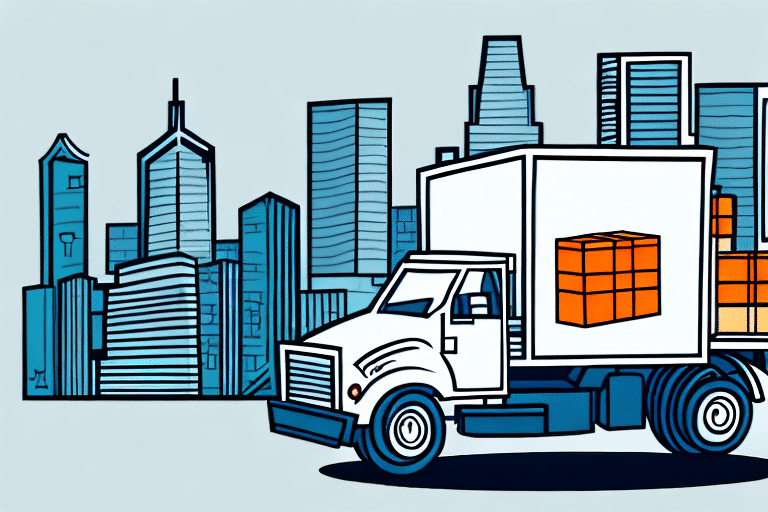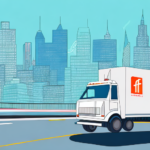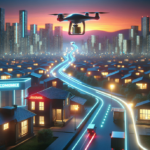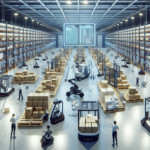Unlocking the Benefits of Last Mile Fulfillment
In today's competitive eCommerce landscape, last mile fulfillment has become a critical factor in determining the success of online businesses. This final leg of the delivery process, which moves products from the warehouse or local store directly to the customer's doorstep, plays a pivotal role in customer satisfaction and business performance. This article offers an in-depth analysis of last mile fulfillment, exploring its benefits, strategies, and future trends to help businesses optimize their delivery processes.
Understanding Last Mile Fulfillment
Last mile fulfillment involves delivering products to customers' chosen locations, whether it be their homes or offices. As eCommerce continues to grow, the importance of efficient last mile delivery has surged, driven by increasing customer expectations for faster and more flexible delivery options.
According to a 2023 eCommerce Industry Report, over 70% of customers consider fast delivery times as a key factor in their purchasing decisions. Meeting these demands requires businesses to continuously optimize their delivery processes to enhance customer satisfaction and loyalty.
The main challenges of last mile fulfillment include high costs and logistical complexities. Strategies such as partnering with local couriers, implementing route optimization software, and offering alternative delivery options like store pickups or lockers can help mitigate these challenges and reduce expenses.
The Role of Last Mile Fulfillment in Enhancing Customer Experience
Personalized Delivery Options
Customers today expect a personalized shopping experience, which extends to delivery preferences. Offering multiple delivery options, such as same-day delivery, scheduled deliveries, and flexible time slots, can significantly enhance the customer experience.
Real-Time Delivery Updates
Providing real-time tracking and timely delivery notifications keeps customers informed about their orders, reducing anxiety and improving their overall satisfaction. Implementing advanced tracking systems can help businesses achieve this transparency.
Customer Retention and Loyalty
A seamless last mile delivery experience encourages repeat purchases and fosters customer loyalty. Satisfied customers are more likely to leave positive reviews, recommend the business to others, and continue shopping with the company.
Impact of Last Mile Fulfillment on Business Performance
Cost Reduction
Optimizing last mile delivery can lead to significant cost savings. Efficient route planning and the use of local delivery partners can reduce shipping expenses, allowing businesses to offer competitive pricing.
Increased Sales and Market Share
By providing superior delivery options, businesses can differentiate themselves from competitors, attract more customers, and increase their market share.
Sustainability and Brand Image
Implementing eco-friendly delivery methods, such as electric vehicles or bicycles, not only reduces the carbon footprint but also strengthens the brand's image among environmentally conscious consumers.
Strategies and Best Practices for Effective Last Mile Fulfillment
Outsourcing and Partnerships
Small businesses can benefit from outsourcing their delivery processes to third-party logistics providers or forming partnerships with local delivery services. This approach allows them to leverage specialized expertise and resources without significant upfront investments.
Technology Integration
Utilizing route optimization software, real-time tracking systems, and automated delivery scheduling can streamline operations, reduce errors, and enhance efficiency.
Alternative Delivery Methods
Offering options like click-and-collect, locker pickups, and neighborhood hubs can reduce delivery times and costs while providing customers with convenient alternatives.
Technology and Innovation in Last Mile Fulfillment
Advanced Delivery Technologies
Emerging technologies such as drones and autonomous vehicles have the potential to revolutionize last mile delivery by increasing speed and reducing costs. Although still in the early stages, these technologies promise significant advancements in the near future.
Artificial Intelligence and Data Analytics
AI-powered algorithms can analyze vast amounts of data to optimize delivery routes, predict demand, and improve overall efficiency. Data analytics also provides insights into customer behavior, enabling businesses to tailor their delivery strategies accordingly.
Augmented Reality (AR)
AR technology can enhance the delivery experience by providing customers with real-time information about their package's location and estimated delivery time. It can also assist delivery drivers in navigating complex routes more effectively.
The Future of Last Mile Fulfillment: Trends and Predictions
- Increased adoption of drones and autonomous vehicles for faster deliveries.
- Integration of voice-activated assistants for seamless delivery notifications.
- Utilization of blockchain technology for secure and transparent tracking.
- Growth of crowdsourced delivery models to enhance flexibility and reduce costs.
- Expansion of urban fulfillment centers to ensure quicker and more efficient deliveries.
- Implementation of augmented reality (AR) to improve delivery accuracy and customer interaction.
As these trends continue to develop, businesses must stay abreast of technological advancements and evolving customer expectations to remain competitive and ensure efficient last mile fulfillment.
Balancing Efficiency and Customer Satisfaction
Achieving an optimal balance between operational efficiency and high levels of customer satisfaction is crucial for successful last mile fulfillment. Businesses must ensure reliable and timely deliveries while also offering flexible and personalized options to meet diverse customer needs.
Implementing real-time tracking, providing flexible delivery windows, and offering multiple delivery options are essential strategies to enhance the customer experience without compromising on efficiency.
Leveraging Data Analytics for Optimization
Data analytics plays a vital role in optimizing last mile fulfillment operations. By analyzing delivery data, businesses can identify bottlenecks, optimize routes, and forecast demand more accurately.
Furthermore, data-driven insights enable companies to make informed decisions about resource allocation, improving overall efficiency and reducing costs. Enhancing customer satisfaction through personalized delivery experiences is also achievable by leveraging data analytics to understand and cater to specific customer preferences.
Conclusion
Last mile fulfillment is a critical component of the eCommerce delivery process, directly influencing customer satisfaction and business success. By optimizing this final delivery step through strategic partnerships, technological innovations, and data-driven approaches, businesses can enhance their delivery processes, reduce costs, and improve customer loyalty.
Moreover, focusing on the entire post-purchase experience, including efficient returns and exchanges, further strengthens customer relationships and fosters long-term loyalty. As the last mile fulfillment landscape continues to evolve, businesses must adapt and innovate to stay competitive and meet the ever-changing demands of today's consumers.




















